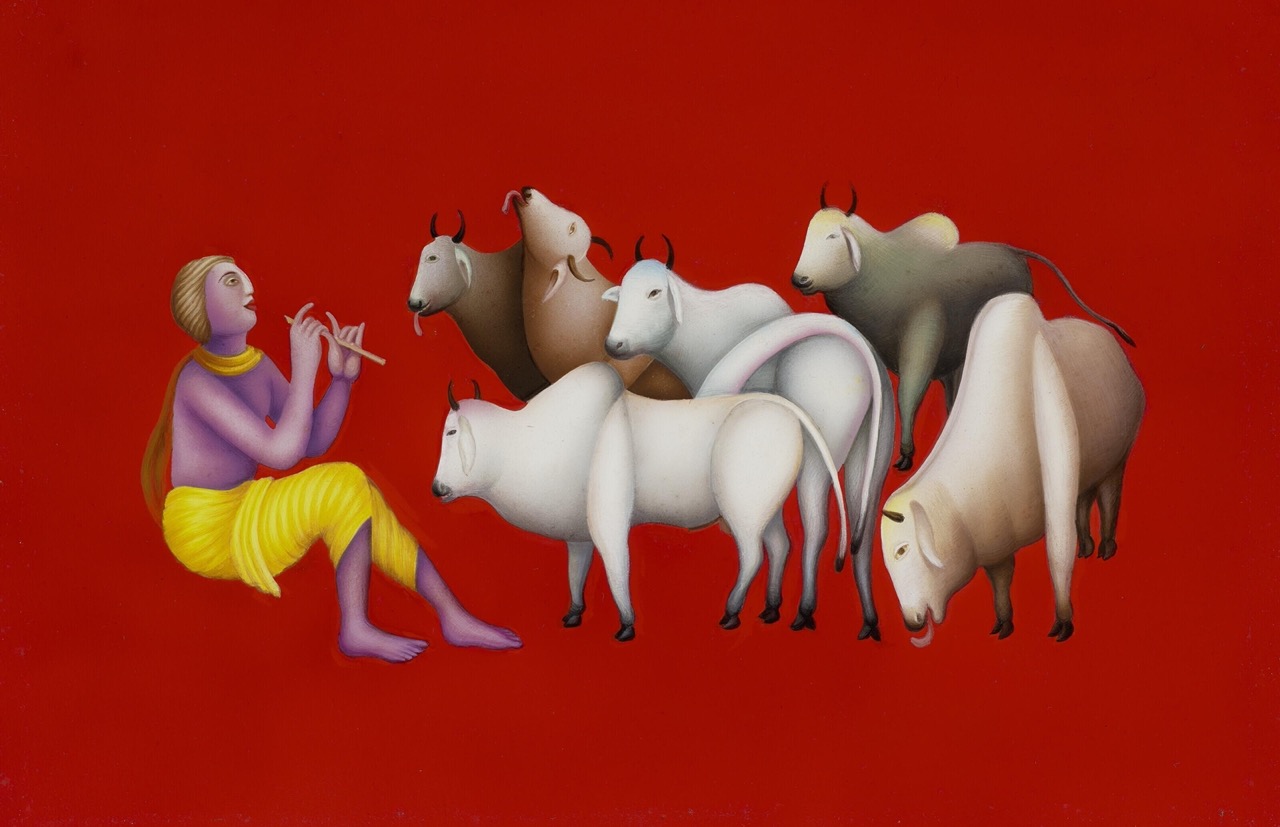As winter wraps its chilly embrace around the world, there’s no denying the beauty of frost-kissed landscapes. Yet, for some, the monotony of gray skies and cold winds can cast a subtle, lingering shade of the ‘winter blues’. Fear not, dear reader, for we have the perfect remedy in the form of an artistic escape.
In this curated collection, we invite you on a visual journey through 5 breathtaking artworks that defy the winter gloom with the dynamic interplay of red and green hues.

Frida Kahlo, Self-Portrait Dedicated to Leon Trotsky, 1937; Oil on Masonite, 30 x 24 in.; National Museum of Women in the Arts, Gift of the Honorable Clare Boothe Luce; © 2012 Banco de México Diego Rivera Frida Kahlo Museums Trust, Mexico, D.F. / Artists Rights Society (ARS), New York; Image by Google.
1. To kick off, we delve into the profound narrative of Frida Kahlo’s self-portrait, which immortalizes her brief liaison with exiled Russian revolutionary, Leon Trotsky, in 1937. The poignant scene features Kahlo holding a bouquet and with a letter of dedication that reads “with all my love”, symbolizing the depth of her emotions. Embedded in the Mexicanidad movement, this artwork rejects European influences, embracing Kahlo’s return to Mexican roots. Infused with inspiration from Tehuantepec women’s attire and echoes of pre-Columbian and folk traditions, Kahlo’s composition mirrors the influence of retablos – traditional Mexican devotional paintings.

Raja Ravi Varma, A Tamil Lady, Oil Paint. 1880-01-01/1900-12-31. Image courtesy of Raja Ravi Varma Heritage Foundation.
2. Our next masterpiece is ‘A Tamil Lady’ by Raja Ravi Varma. Hailing from Kilimanoor, Travancore, Varma’s journey began under the guidance of his uncle Raja Raja Varma and his poetess mother, Umayamba Bayi.Renowned for bringing art to the masses, Varma’s realistic portrayals of contemporary and mythological figures garnered both royal and international acclaim. His intricate and richly-textured works elevated him to artistic greatness, making him a sought-after talent among the elite. His reproductions made his art available and affordable to all, ensuring that the enchantment of ‘A Tamil Lady’ could be appreciated by audiences far and wide.

Tom Vattakuzhy, An Evening Play, Oil on Canvas, 2021. Image courtesy of Art Centrix Space.
3. Tom Vattakuzhy, is an Indian painter born and raised in Kerala, whose profound exploration of human experiences takes center stage. In his own words, Vattakuzhy draws inspiration from diverse sources like nature, people, cinema, fiction, and lived experiences. His paintings, born during the lockdown period of the pandemic, seek to bridge the gap between real and surreal, fact and fiction. For him, a painting is not confined to the canvas but exists in the viewer’s mind, serving as a pointer or springboard to evoke psychological moods.
Devoting himself solely to art since 2010, Vattakuzhy aimed to bring art closer to society through periodical illustrations, termed ‘story-paintings.’

Piet Mondrian, Composition with Red, Blue, and Yellow, Oil on Canvas. 1930. Image courtesy of Piet Mondrian, Public domain, via Wikimedia Commons.
4. Dominated by a bold red rectangle, ‘Composition with Red, Blue and Yellow’ showcases Mondrian’s innovative style, developed around 1930, featuring wide, sub-divided strips that define the painting’s edges. Criss-crossing black bars, displaced from the center, converge in the bottom-left corner, creating a dynamic visual tension.
Mondrian’s journey to abstraction, influenced by landscape art, took a unique turn. Departing from a Cubist phase centered on light and dark contrast, he introduced ‘Neoplasticism’ in 1920. This revolutionary style relied on vertical and horizontal lines, along with primary colors – red, blue, and yellow.

Senaka Senanyake, Tiger, Oil on Canvas, 2021. Image courtesy of Grosvenor Gallery.
5. Inspired by the lush landscapes surrounding his Colombo studio, Senanayake’s canvases burst with vibrant hues, drawing attention to the plight of Sri Lanka’s rainforests. Focused on the endangered flora and fauna, he seeks to convey a positive message despite the challenges. In his own words, “I could have shown the negative aspects of destruction, but I try to do happy, positive paintings.” Renowned as one of the region’s most significant living artists, his recent work reflects a deep concern for the endangered rainforests in Sri Lanka.




